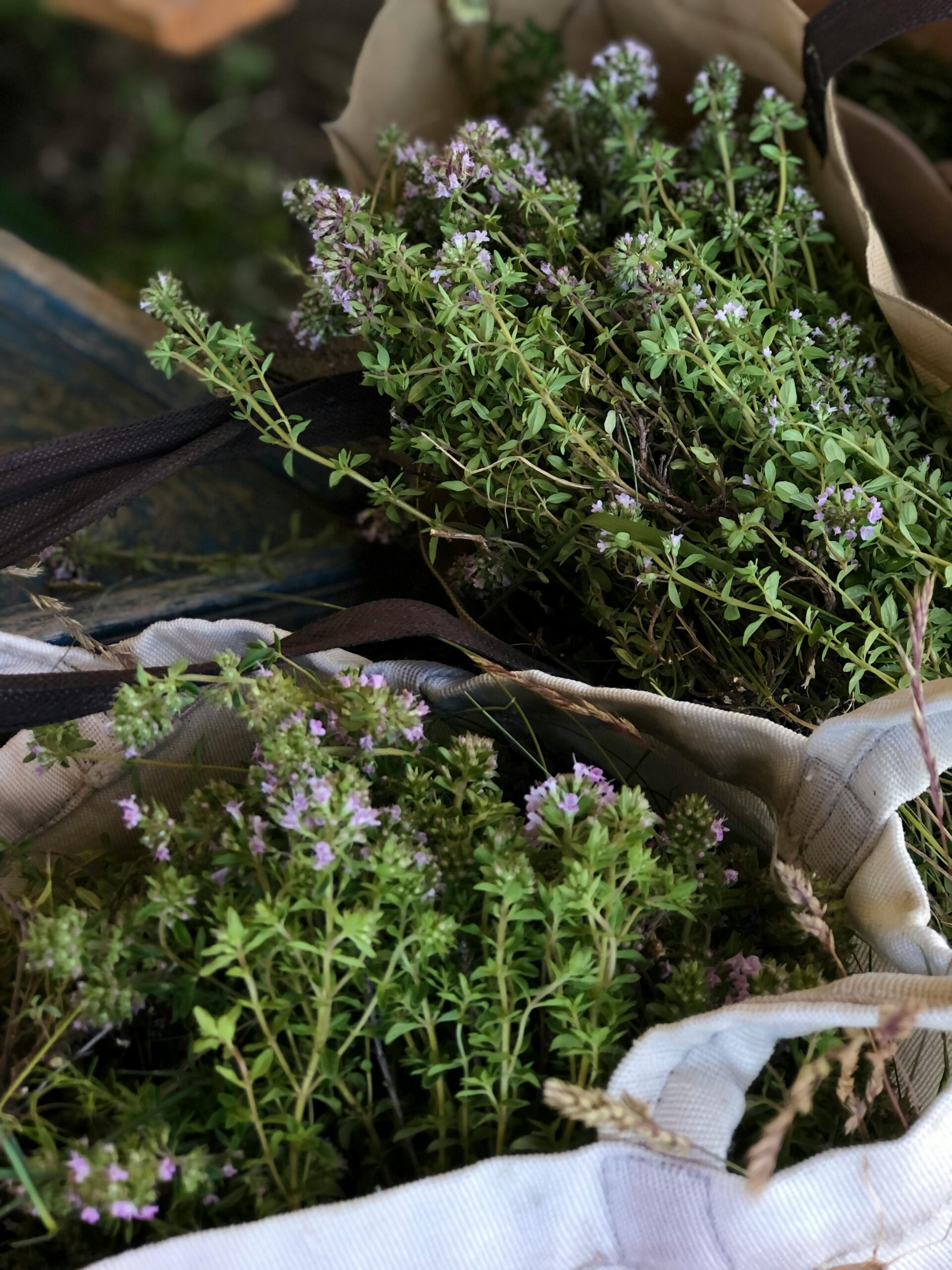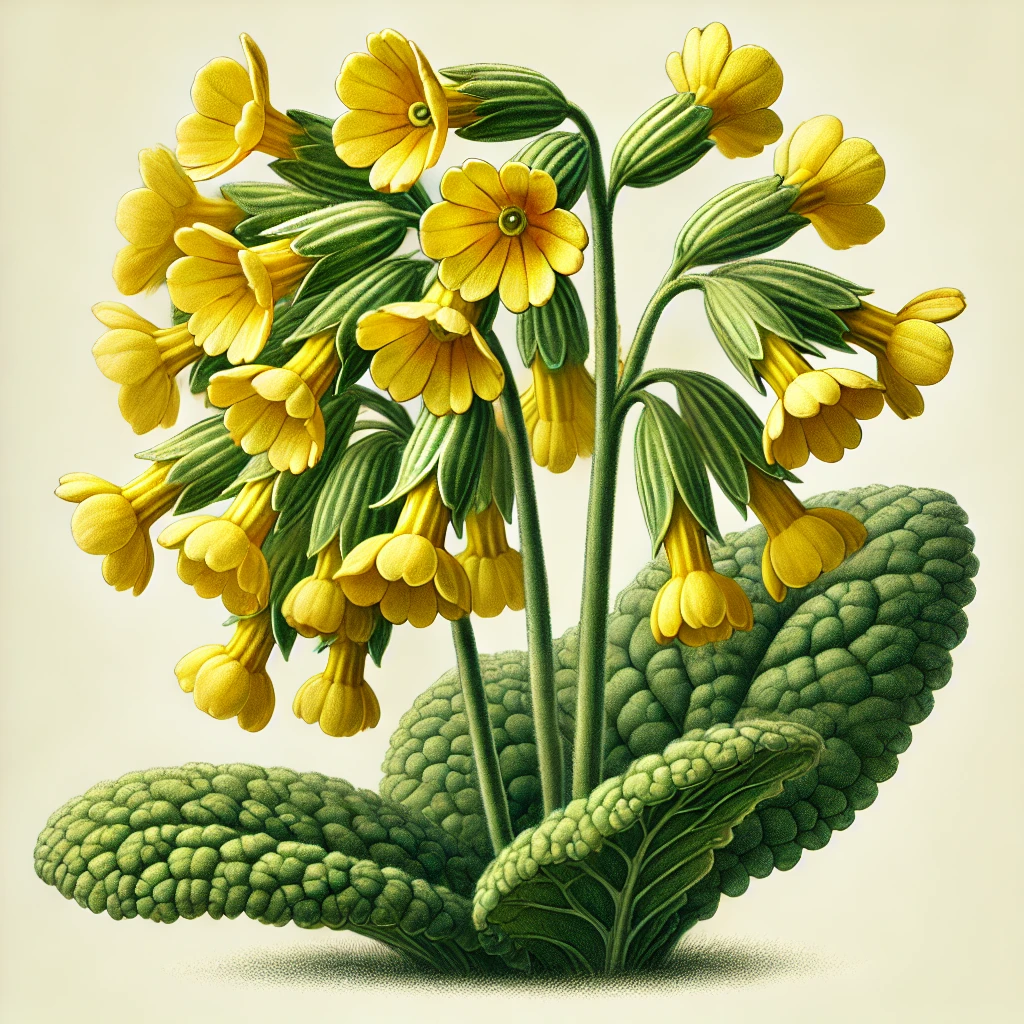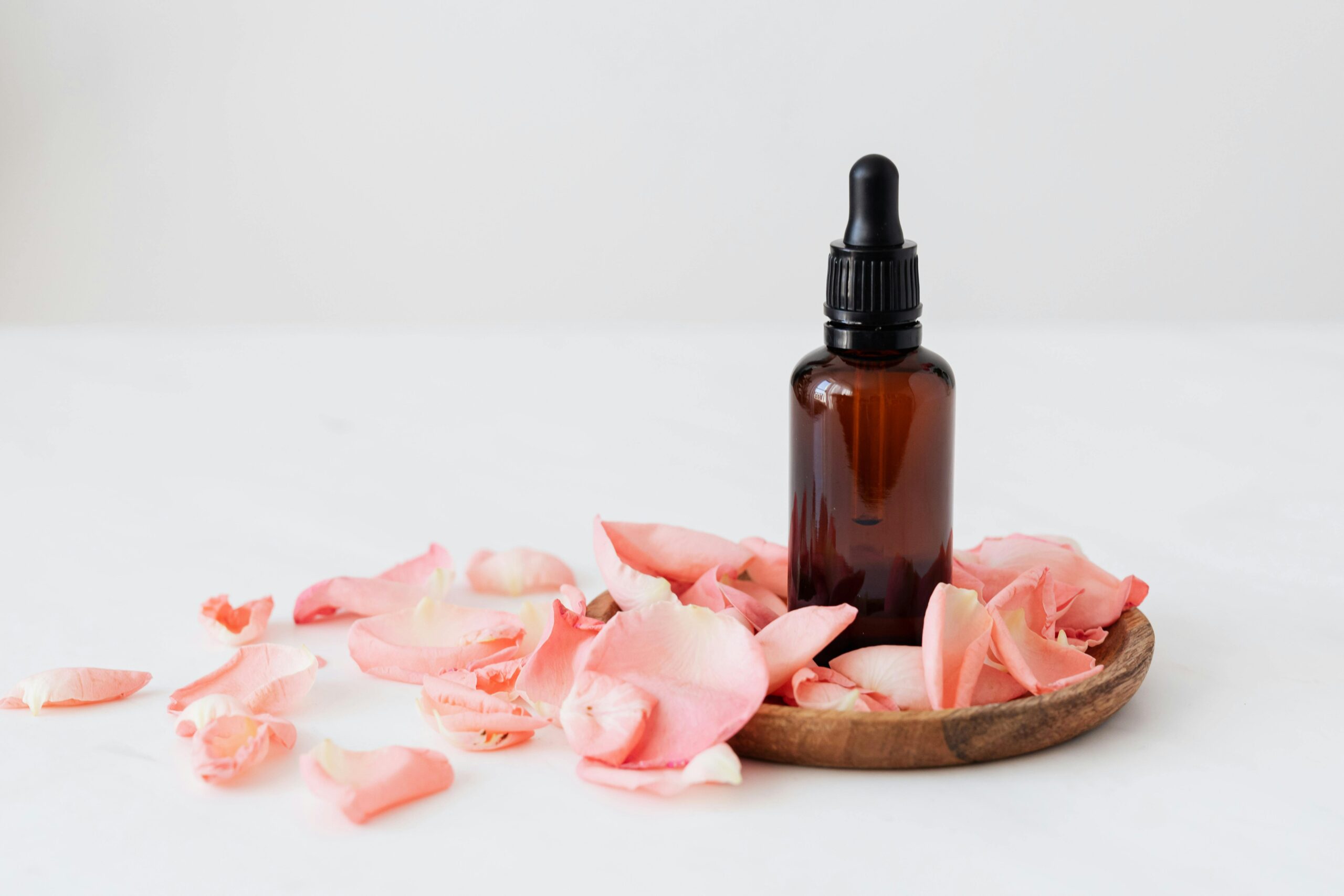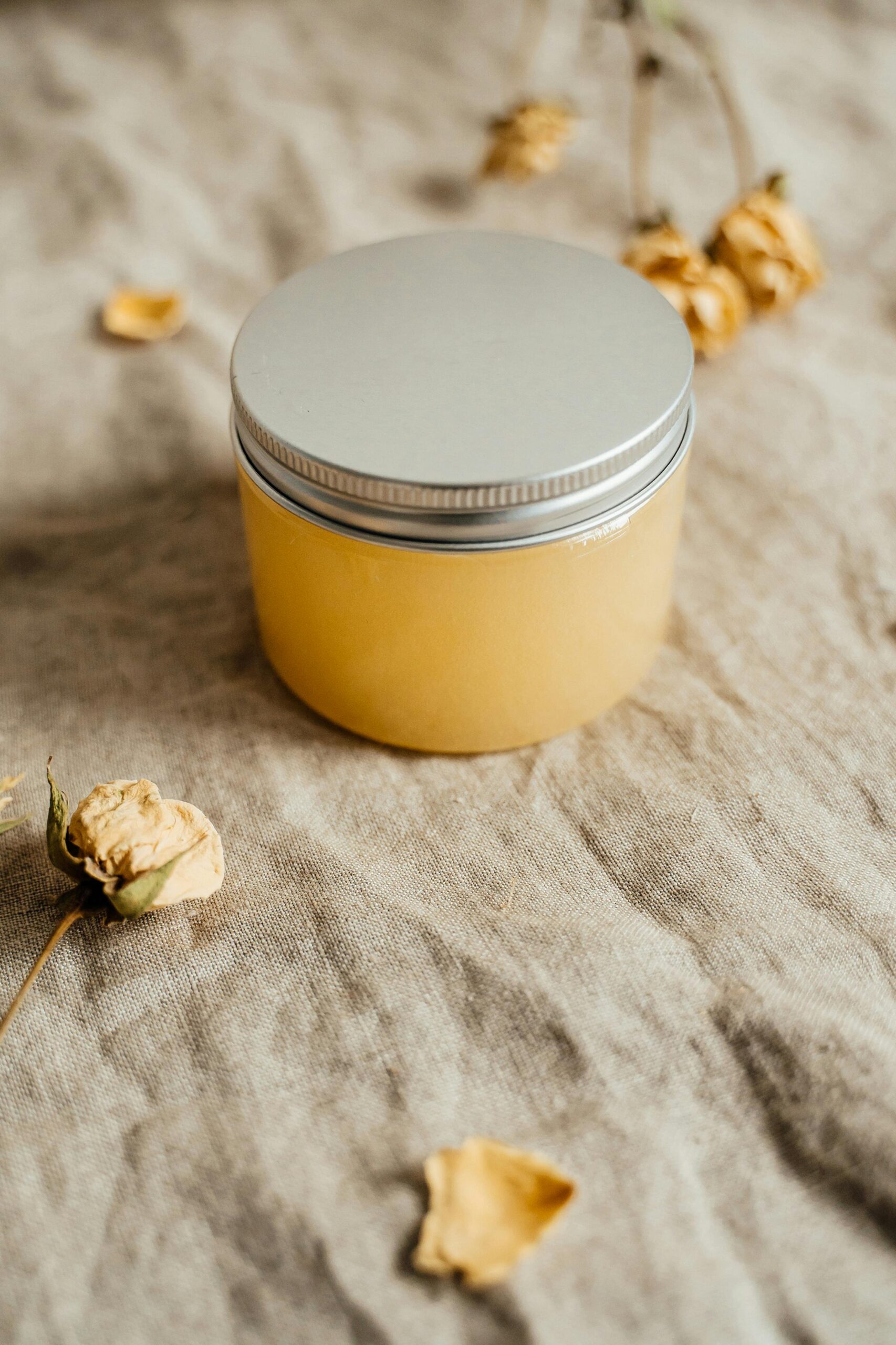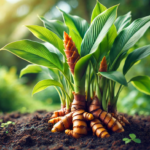Swedish Herb Compresses: Tradition, Benefits and Ways of Use
Introduction to Swedish Herb Compresses
Swedish herb compresses represent a traditional form of natural treatment with deep roots in the history of Scandinavian folk medicine. These remedies have been used for centuries as an effective method to treat various ailments, primarily relying on the curative properties of local plants. The history of this type of compress is intertwined with the ancient traditions of Northern culture, which combined botanical knowledge with empirical experiences in health treatments.
The origin of Swedish herb compresses can be traced back to indigenous communities living in the northern regions, where the harsh climate and abundant nature offered a variety of medicinal plants. These communities developed specific methods of preparing compresses, using herbs such as chamomile, St. John’s wort, or sage, plants renowned for their soothing and anti-inflammatory effects. Over time, these practices were influenced by contributions from other European cultures, thereby consolidating a complex system of natural remedies.
In traditional Swedish medicine, the herbal compress is applied to the affected areas of the body, with the purpose of reducing pain, alleviating inflammation, and promoting healing. In their characteristic style, the northerners incorporated the use of these herbs not only for their therapeutic effects but also as part of local rituals, emphasizing the deep connection between man and nature. This holistic approach underlines the importance of balance and harmony, honoring ancestral traditions and the power of plants as natural remedies, thus laying the groundwork for the use of Swedish herb compresses even today.
Swedish Herbs: What They Are and How They Work
Swedish herbs represent a combination of medicinal plants that have been used over the centuries in traditional medicine, especially in the northern regions. These plants are often used in the form of compresses, which are applied to the skin to treat various conditions. The composition of Swedish herbs includes a varied selection of plants, each having specific therapeutic properties. Among the most common herbs are marigolds, chamomile, licorice, and echinacea.

The active principles in these plants are responsible for their beneficial effects on the body. For example, marigolds contain carotenoids, which have anti-inflammatory properties, thus helping to reduce inflammation and skin irritation. Chamomile is renowned for its soothing and antispasmodic effects, often being used in compresses to alleviate localized discomfort. Licorice is appreciated for its antimicrobial and antioxidant properties, making it useful in treating skin infections.

These Swedish herbs work in synergy, facilitating the body’s recovery by stimulating blood circulation and reducing muscle tension. By applying the compress with these plants, the active substances penetrate the skin, helping to alleviate pain and promote an overall sense of well-being. It is important to note that the efficacy of these herbs can vary depending on the individual and on how they are used, so adults or children wishing to try these natural remedies should seek the advice of a health specialist.
The Benefits of Swedish Herb Compresses
Swedish herb compresses are attributed numerous benefits thanks to the natural ingredients from which they are made. These traditional treatments are popular among those seeking alternative solutions for alleviating various ailments. One of the main advantages of using Swedish herb compresses is their ability to reduce muscular and joint pain. Herbal gardens are often rich in active substances that help relax inflamed tissues, providing quick relief for users.
In addition, the compress promotes blood circulation. This circulatory stimulation can be crucial for the body’s recovery after intense physical exercise or following injuries. Many case studies have shown that individuals who applied such compresses experienced quicker muscle regeneration, which allowed them to return to their daily activities in a shorter time.
Another important aspect is the anti-inflammatory effect associated with the use of herbal compresses. By utilizing various medicinal plants, these compresses can reduce localized inflammations, helping to alleviate symptoms related to arthritis or other inflammatory conditions. Users’ testimonials frequently emphasize the effectiveness of these natural treatments, with many people reporting a significant decrease in discomfort and overall improvements in their health.
For this reason, the use of Swedish herb compresses proves to be a viable option for those who wish to address health issues through traditional methods while enjoying the benefits of natural plants.

How to Prepare Swedish Herb Compresses
Preparing Swedish herb compresses is a simple yet effective process that can easily be carried out at home. The first important step is the selection of herbs, which should be fresh or dried, depending on availability. Herbs such as chamomile, lavender, rosemary, and thyme are often used because of their beneficial properties. Ensure that the selected herbs are of superior quality and, if possible, sourced organically.
Once you have chosen the appropriate herbs, the next step is to infuse them. A common method is to add about 2–3 tablespoons of herbs into a container with approximately 500 ml of boiling water. Cover the container and let the mixture sit for 15–20 minutes. This step allows the release of the active substances from the herbs, increasing the efficiency of the compresses. Meanwhile, prepare a cheesecloth or a strip of clean fabric that will be used as the base for the compress.
After the infusion has cooled slightly, strain the mixture to remove the herbs. Moisten the cheesecloth or fabric in the obtained infusion and gently squeeze to avoid drips. Then, apply the compress to the desired area of the skin, ensuring that it is comfortable. It is recommended to leave the compress on the skin for 15–30 minutes, depending on your needs. This practice not only helps to ease discomfort but also brings a feeling of relaxation and well-being.
Swedish herbs, a mixture of plants traditionally used in alternative medicine, contain a variety of botanical components that contribute to their therapeutic benefits. Among the key plants are Ruta graveolens, myrrh, and Valeriana officinalis. Each of these plants brings its own qualities, collaboratively enhancing the overall effects of the mixture.
Ruta graveolens, also known as common rue, is valued for its anti-inflammatory and antispasmodic properties. This plant can help alleviate cramps and reduce inflammation, making it a valuable ingredient in various remedies. In addition, it is also used to support digestion by stimulating bile flow and facilitating nutrient absorption.
Myrrh, another essential ingredient of Swedish herbs, is extracted from the resin of a woody plant. This component contributes to antibacterial and antifungal effects and is especially used to support oral and throat health. Moreover, myrrh is known for its calming properties on the nervous system, positively affecting anxiety and stress.
Similarly, Valeriana officinalis is famous for its sedative effects, often being used to alleviate insomnia and promote restful sleep. This plant also has relaxing qualities, helping to reduce tension and prevent mental unrest.
Combining these plants in Swedish herb recipes generates a synergistic blend, effective in supporting overall health. Thus, each component not only retains its individual benefits but also contributes to enhancing the global effect of the mixture, making Swedish herbs a popular option in alternative therapies.
Indications and Contraindications for Use of Compresses
Swedish herb compresses are recognized for their therapeutic properties, their use being associated with various health benefits. It is important to understand both the indications and the contraindications before resorting to this form of natural treatment. In general, the compresses are used to soothe inflammations, reduce localized pain, and support tissue regeneration. They may also be useful in conditions such as arthritis, bruises, or muscle pain. Containing natural ingredients, the compresses contribute to muscle relaxation, thus improving general comfort.
However, it is essential to pay attention to possible contraindications. The use of Swedish herb compresses is not indicated for individuals who suffer from allergies to the active ingredients in these herbal blends. Additionally, people with dermatological conditions such as eczema or psoriasis should avoid applying the compresses, as these may exacerbate symptoms. Furthermore, the use of compresses is contraindicated in cases of active infections or open wounds, as this can worsen the overall health status by introducing bacteria.
It is imperative that any use of Swedish herb compresses be preceded by consultation with a doctor or a specialist in phytotherapy. These professionals can provide personalized information and recommendations based on each individual’s health status. This way, the safe and effective use of these natural remedies is ensured, minimizing possible risks.
Personal Experiences
Swedish herb compresses have become increasingly popular over the past decades, and user experiences reflect the effectiveness of these natural remedies. Many people have discovered that using these compresses has provided them with relief and comfort in various conditions. For example, Maria, a patient who suffered from chronic muscle pain, chose to integrate Swedish herb compresses into her daily routine. She observed a significant improvement in her discomfort and reported increased mobility after using this treatment for several weeks.
Another example is the story of Ion, who tried the compresses as part of a complementary therapy following a surgical intervention. Ion claimed that the regular application of the compresses contributed to reducing inflammation and accelerated his recovery process. He was impressed by the calming effects and by the way these natural preparations helped him feel better both physically and mentally.
Success stories do not stop here. Ana, who used Swedish herb compresses for dermatological issues, noticed an improvement in her skin condition, which boosted her self-confidence. Many reviews also underline the beneficial effect these remedies have in managing stress and tension. In addition, users appreciate the ease of preparing the compresses and the accessibility of the herbs used.
These testimonies demonstrate that Swedish herb compresses can offer effective solutions for a variety of health problems, turning the personal experiences of users into a testament to the natural power of this type of treatment.
Comparing Compresses with Other Treatment Methods
Within the various treatment approaches for different conditions, Swedish herb compresses stand out by offering a natural alternative to conventional medications. In comparison with pharmaceutical drugs, which may include significant side effects and dependency, Swedish herb compresses are often considered safer. They utilize natural extracts from plants, having a milder impact on the body. However, their effectiveness may vary depending on the individual and the severity of the condition treated.
It is important to mention that although Swedish herb compresses can offer therapeutic benefits, they should not replace conventional medical treatments when these are necessary. For example, in cases of acute or severe conditions, such as infections, prompt medical intervention is essential. In this context, if used in parallel with standard treatments, the compresses can improve patient comfort and aid in recovery.
In contrast with other alternative therapies, such as acupuncture or aromatherapy, Swedish herb compresses focus on the direct application of active substances to the affected areas of the body. This localized method facilitates the penetration of ingredients into inflamed or painful zones. However, the use of these compresses may require prior preparation, unlike conventional medications, which are ready for administration.
Thus, each treatment method presents distinct advantages and disadvantages. It is essential for the patient to assess the available options, consult with specialists, and consider both their individual needs and the nature of the condition to choose the most appropriate therapeutic approach.
Tips for Integrating Compresses into a Daily Routine
Integrating Swedish herb compresses into a daily routine can bring numerous benefits for health and well-being. It is important to adopt a systematic approach so that these natural remedies become a synergistic part of one’s lifestyle. First of all, the frequency of using the compresses should be adapted to individual needs. Generally, it is recommended to use the compresses two to four times a week, depending on the condition being treated and the body’s reaction.
Another important aspect is choosing the optimal moment for application. The most effective times are in the morning, for revitalization, or in the evening, for relaxation and recovery. For example, if you wish to use Swedish herb compresses to alleviate muscle pain, applying them in the evening after an exhausting day can be extremely beneficial. It is also essential to adhere to the recommended application duration: typically, between 20 and 40 minutes is considered sufficient to allow the active substances from the herbs to penetrate effectively into the skin.
The combinations of herbs play a crucial role in the efficacy of the compresses. For example, if you want to treat inflammations, a combination of nettle and arnica may provide significant results. Try to experiment with different combinations to find out what works best for you. It is advisable to consult a phytotherapy specialist to personalize the blends based on specific needs and individual reactions.
Resources and Where to Find Quality Swedish Herbs
Swedish herbs are increasingly sought after due to their therapeutic benefits and their use in traditional medicine. For those interested in purchasing these products, there are several places where you can obtain quality Swedish herbs. An ideal starting point is online stores offering a wide range of plant-based preparations. Many of these websites collaborate with local farmers and provide organic products, thus ensuring the purity and efficacy of the herbs.
In addition, natural pharmacies are another viable option. Here, consumers can find not only Swedish herbs but also receive advice from specialists in natural treatments. Pharmacies often provide personalized recommendations based on individual needs, ensuring the proper use of these remedies. It is important to verify the pharmacy’s reputation and the quality of the available herbs to have confidence in their effectiveness.
Furthermore, specialized courses are a valuable resource for those wishing to learn more about the use of medicinal plants, including Swedish herbs. These courses cover a wide range of topics, from plant identification to the preparation of tinctures and teas. Participating in such courses not only enhances theoretical knowledge but also offers the chance to experience this practice under the guidance of professionals.
In conclusion, finding quality Swedish herbs can be achieved through online stores, natural pharmacies, and specialized courses. These resources are essential for those who wish to explore the benefits of natural treatments and to integrate Swedish herbs into their health routines.
Introduction to Swedish Plant Baths
Swedish plant baths represent a remarkable tradition in Swedish culture, with deep roots in the history of personal care and health. These baths are not just a form of relaxation but also a therapeutic practice that uses the natural power of plants. In Sweden, various aromatic and medicinal plants have been used for centuries to support the physical and mental well-being of individuals. This type of bath focuses on the use of specific plants, each having unique properties that contribute to improving health.
The main advantage of plant baths is their ability to provide a holistic experience. In addition to physical relaxation, these baths also promote the detoxification of the body, stress relief, and improved blood circulation. The plants used, such as chamomile, sage, or lavender, have demonstrated anti-inflammatory and antiseptic properties. Thus, contact with these natural ingredients helps regenerate the skin, giving it a healthy and revitalized appearance.
The benefits of plant baths extend beyond merely improving physical health; they also have a significant impact on mental well-being. The aroma of the plants helps relax the mind and reduce anxiety, transforming the bath into a sanctuary of calm and tranquility. These indulgent sessions are not only personal care rituals but also precious opportunities to recharge mentally, essential for overall well-being.
Benefits of Plant Baths
Swedish plant baths offer a wide range of benefits for both physical and mental health. These baths, rich in plant extracts, contribute to relaxing both the body and mind, serving as an effective method to combat everyday stress. By inhaling the aromatic vapors and by coming into contact with water infused with plants, users experience a deep sense of tranquility, which helps lower tension and anxiety.
An important aspect of plant baths is their curative property. Many plants used in these baths, such as lavender, chamomile, or eucalyptus, are known for their ability to alleviate various conditions. For example, chamomile is recognized for its anti-inflammatory effect, helping to reduce skin irritations, while lavender can help improve sleep and promote relaxation. Thus, plant baths not only act on the emotional well-being but also on the overall physical condition.
Additionally, Swedish plant baths improve blood circulation and stimulate body detoxification. These baths provide a unique opportunity to sweat, eliminating toxins and unwanted accumulations. Consequently, regular use of plant baths can help maintain hormonal balance, reducing the risk of developing health problems. In particular, people suffering from digestive issues or muscle pain can benefit significantly from these practices, underscoring both their therapeutic and relaxing impact.
Which Swedish Plants Can Be Used in Baths?
Swedish plants offer a variety of therapeutic and aromatic benefits, making them an excellent choice for baths. In the following section, we explore some of the most popular plants that can be used, starting with lavender, known for its relaxing effects and ability to reduce stress. Essential oils extracted from lavender flowers can be added to bathwater to create a calming ambiance.
Chamomile is another appreciated plant, recognized for its anti-inflammatory and soothing properties. Chamomile infusions can be prepared by steeping dried flowers in hot water, after which they are added to the warm bath for a comforting effect, improving the quality of sleep.
Mint is a plant with a refreshing and invigorating fragrance, ideal for energizing baths. It can be used in the form of essential oil or fresh leaves. Its aroma helps open up the respiratory pathways and stimulate circulation, offering a sensation of freshness.
Other Swedish plants worth mentioning include rosemary, which has toning effects on the body and may help reduce muscle pain. Additionally, linden is known for its relaxing properties, and infusing linden flowers in warm water is an excellent method to benefit from this plant.
Each of these plants can be easily prepared for baths, either through infusions or by adding essential oils directly into the water. This not only enhances the bathing experience but also brings multiple advantages for health and well-being.
Methods for Preparing Plant Baths
Plant baths represent an excellent way to benefit from the therapeutic properties of plants. Several methods exist for preparing these baths, each with its specific advantages. A frequently used technique is the preparation of infusions, which involves adding the plants to hot water to extract their active substances. This method is particularly effective for plants with essential oils or aromatic elements, such as lavender or chamomile. Typically, it is recommended to use approximately 100 grams of dried plants per liter of water. Once the infusion is ready, it can be added to the bathwater.
Another popular method is the steam bath, which presents benefits for both the skin and the respiratory system. This is achieved by boiling the plants in a container, and the resulting vapor reaches the body. It is an effective technique for plants that help clear the respiratory passages, such as eucalyptus. In this case, using about 50 grams of plants is recommended for optimal effect.
Additionally, a simple way to enjoy plant baths is to add dried plants directly into a bathtub filled with warm water. This allows a variety of plants, such as rosemary or mint, to release their properties directly into the water. It is important to use approximately 200 grams of plants, allowing them to infuse in the water for 10–15 minutes before entering the bath. By diversifying the combinations of plants, personalized experiences can be created, associating the plants with the desired effects, such as relaxation or energizing. Therefore, exploring these methods will considerably enhance the experience of a plant bath.
Enhancing the Bath Experience
Enhancing the experience of Swedish plant baths can transform an ordinary ritual into an oasis of relaxation and revitalization. One way to create a conducive environment is by choosing quality aromatic candles, which not only light up the space but also provide a pleasant fragrance. Scents of lavender, eucalyptus, or mint can perfectly complement the calming effects of Swedish plants, contributing to the relaxation of both the mind and the body.
In addition to aromatic candles, relaxing music plays an essential role in creating the ideal atmosphere for a soothing bath. Choose gentle melodies, such as ambient music or natural sounds, that induce a state of calm and well-being. Keeping the volume at a moderate level helps maintain a tranquil atmosphere without distracting from the moment of relaxation.
Essential oils are also a key ingredient in enhancing the experience of a plant bath. Adding a few drops of essential oil to the water can intensify the effects of the plants and provide a deeper aroma. Oils of rosemary or tea tree can not only bring a pleasant scent but also health benefits, such as stimulating circulation or improving mood.
Finally, integrating these essential elements – aromatic candles, relaxing music, and essential oils – will create a dedicated space for relaxation, where Swedish plants can exert their beneficial effects, transforming the bathing experience into a ritual of deep revitalization.
Ensuring Safety in the Use of Plants for Bathing
Using plants in Swedish baths can bring numerous therapeutic and relaxing benefits, but it is essential to follow some precautions to avoid potential adverse reactions. First of all, it is crucial to identify any possible allergies to plants. Some individuals may develop allergic reactions to certain herbs or flowers, which can cause skin rashes, irritations, or discomfort. Thus, it is recommended to perform an allergy test by applying a small amount of infusion on the skin to observe any reactions.
Another important aspect to consider is the interaction between plants and any prescribed medications. There are plants that may influence the effectiveness of certain medicines, either by intensifying them or by diminishing their effect. For example, plants such as Ginkgo biloba or St. John’s wort can interfere with anticoagulant and antidepressant medications. Individuals undergoing regular medication should consult a doctor before introducing any plant into their bathing routine.
People with pre-existing medical conditions, such as cardiovascular issues, diabetes, or asthma, should be particularly cautious. The use of certain plants may exacerbate the symptoms of these conditions. For example, some plants with diuretic properties can cause dehydration or fluctuations in blood pressure. It is imperative that before starting any plant therapy, one discusses it with a health specialist who can offer personalized and relevant advice.
Reviews and User Experiences
Users’ experiences with Swedish plant baths emphasize the positive effects they notice on both health and mental well-being. Many reviews highlight the calming and relaxing properties of these baths, mentioning a reduction in stress and anxiety after a session. For instance, one user shared that after a chamomile plant bath, she experienced deeper, more refreshing sleep and noted how the natural aromas contributed to a tranquil atmosphere in her relaxation space.
Other testimonials emphasize the positive impact of Swedish plant baths on the skin. One user mentioned that a bath with lavender and rosemary helped alleviate skin irritation and provided intense hydration. She acknowledged the benefits of rosemary, which, according to traditions, is known for its antioxidant and revitalizing properties.
Some users also remarked that Swedish plant baths offer an excellent opportunity to create a personal care ritual dedicated to self-reflection and relaxation. A common theme in reviews is the importance of transforming the bath into a personal sanctuary, a place where users can escape the daily hustle. Often, users mention incorporating relaxing music or candles during the bath, thereby enhancing the beneficial effect of the plants.
These wonderful stories shape the image of Swedish plant baths as not just a simple hygiene ritual, but also an effective method for improving mental and physical health. Thus, it is clear that user experiences confirm the profound benefits of this traditional practice.
Swedish Plant Baths in Swedish Culture
Swedish plant baths constitute an essential component of deeply rooted traditions in Nordic culture. In Sweden, the use of plants in personal care rituals is an age-old practice that combines the benefits of aromatherapy with local traditions. These baths are not perceived merely as methods of relaxation but as forms of holistic therapy that promote physical and emotional well-being.
The origins of these rituals are lost in the mists of time, being an integral part of the Swedish way of life. The use of aromatic plants such as lavender, chamomile, and mint is not only for comfort; each plant contains specific curative properties that contribute to detoxifying the body and revitalizing the mind. Moreover, these baths reflect the deep connection between people and nature, emphasizing a traditional respect for natural resources.
In contemporary Swedish society, plant baths have become a popular way to escape everyday stress. Many spas and wellness centers offer treatments that include Swedish plant baths, becoming a common choice for those seeking moments of introspection and revitalization. These practices are not only a form of personal care but also a way to honor ancestral traditions, keeping the Swedish cultural heritage alive.
Thus, Swedish plant baths not only improve the individual’s well-being but also contribute to maintaining the connection with ancient traditions and customs, symbolizing an important cultural continuity. These rituals are an excellent example of how nature and culture intertwine in the daily lives of the Swedes.
Conclusion and Encouragement to Experiment
In conclusion, the discussion about Swedish plant baths makes it clear that they offer numerous benefits for health and well-being. These baths are not just a relaxing ritual; they are an effective method to improve skin appearance, reduce stress, and promote a restful sleep. The plants used in these baths, such as chamomile, lavender, or rosemary, are recognized for their therapeutic properties, contributing to a pleasant and revitalizing experience.
In addition to the impact on physical health, Swedish plant baths also influence mental well-being by promoting a sense of calm and relaxation. The process of surrounding yourself with the aromas and natural essences of the plants can have a positive effect on your mood, helping to combat anxiety and depression. This emphasizes the importance of integrating these practices into your daily lifestyle.
We encourage readers to experiment with Swedish plant baths, exploring a variety of herb combinations that suit personal preferences. Each bath can be tailored to individual needs, ensuring maximum benefits. It is also advisable to educate oneself about the properties of the plants used, in order to discover both their physical and psychological effects.
Therefore, we urge everyone to try this natural method of relaxation and wellness, which promises not only to improve health but also to enrich daily life with moments of calm and introspection.
Frequently Asked Questions About Swedish Herb Compresses
How did Swedish herb compresses originate and what significance do they have in traditional medicine?
Swedish herb compresses originated in the northern regions of Europe, where doctors and healers used local medicinal plants to treat pain, inflammation, and wounds. In traditional medicine, these compresses not only serve as solutions for minor ailments but also play a part in a ritual aimed at harmonizing the body and spirit. Over the centuries, they have been enriched with new ingredients and techniques, being recognized for their ability to balance the body and support natural healing processes.
What do Swedish herbs contain and how do they work on the body?
Swedish herbs are generally a blend of several plants such as chamomile, sage, St. John’s wort, or angelica, each having specific properties. In synergy, these plants help reduce inflammation, stimulate blood circulation, and soothe pain. The active compounds, such as flavonoids, polyphenols, or volatile oils, are absorbed through the skin when the compress is applied locally, thus contributing to the revitalization of tissues and supporting regeneration.
What are the main benefits of Swedish herb compresses?
Firstly, these compresses can alleviate muscle and joint pain, being useful in treating contusions, sprains, and other minor traumas. In addition, the antiseptic properties of the plants support the healing of superficial wounds, while their anti-inflammatory effect helps reduce swelling and redness. Many users also mention the relaxing effect attributed to the calming aromas and soothing substances in the blend. By improving circulation and reducing nervous tension, the compress promotes an overall sense of well-being.
How are Swedish herb compresses prepared in practical terms?
The first step involves selecting the plants—fresh or dried—and, if necessary, chopping them finely. A concentrated herbal infusion can be made by boiling the herbs in water for a few minutes, or they can be macerated in an alcoholic base (vodka or 40–50% alcohol) to extract the active substances. Once this liquid is obtained, a cheesecloth or clean cloth is soaked in it and then applied to the affected area. Depending on the instructions, the compress may be left to work for 20–30 minutes or even overnight for a prolonged effect.
In which situations and for what kind of problems is the use of these compresses indicated?
Swedish herb compresses are particularly recommended for local inflammations, muscle or joint pain, superficial wounds, and swelling. Some specialists also suggest their use in cases such as neuralgia, rheumatism, or recovery after intense physical exertion. Additionally, the compress can be beneficial for relieving local tension that arises as a result of stress or a minor physical trauma. However, the effects can vary from person to person, and consulting a specialist remains a prudent option.
Are there any contraindications or possible adverse reactions to these compresses?
Yes. Individuals with hypersensitivity to certain plants in the blend risk developing skin rashes or itching. A simple test on a small area of skin is recommended before using the compresses on a larger scale. Furthermore, those with severe open wounds or complex dermatological conditions should exercise caution. Some phytotherapists recommend avoiding these compresses during pregnancy, especially if the herbs contain compounds with abortive potential. As with any natural treatment, it is essential to follow the recommended dosages and duration.
How do Swedish herb compresses differ from other natural treatments (such as plant baths or poultices)?
Swedish herb compresses focus on localized action, being applied directly to the problem area. Unlike plant baths, which affect the entire body, compresses target a specific region, potentially increasing their effectiveness on localized pain or inflammation. Poultices, on the other hand, usually involve a pasty mass of plants and other ingredients (such as clay), whereas Swedish compresses use an infusion or tincture that is typically simple to prepare and apply.
What can you say about the experiences of users who have adopted Swedish herb compresses?
Many reports emphasize the reduction of inflammation and quick alleviation of muscle or joint pain, especially when the compresses are applied consistently. Some users mention a decrease in discomfort related to rheumatism or during the recovery period after a sprain. On an emotional level, feedback also highlights a general feeling of calm due to the soothing aromas of the plants. At the same time, some users advise those interested to assess their individual tolerance to the plants to avoid potential allergies.
How can Swedish herb compresses be integrated into a balanced lifestyle?
The compress can be applied after physical exercise, when muscles are tense or slight joint stiffness occurs. It can also be used at the end of a strenuous day to relax areas exposed to stress (shoulders, knees, soles of the feet). A regular schedule, for example once or twice a week, can contribute to maintaining overall well-being. In addition, combining compresses with relaxation techniques (yoga, meditation) or massages may maximize the benefits for both body and mind.
Where can quality Swedish herbs be obtained and how do you choose the right products?
It is essential to look for verified sources—natural health stores, organic farms, or reputable phytotherapists. Read the labels carefully to check the list of ingredients and the country of origin. Superior quality plants are grown without pesticides, being harvested at the optimal times to ensure the maximum amount of active substances. For those with little experience, it may be helpful to consult a specialist who can offer personalized recommendations and guide you in using the compresses efficiently and safely.
















